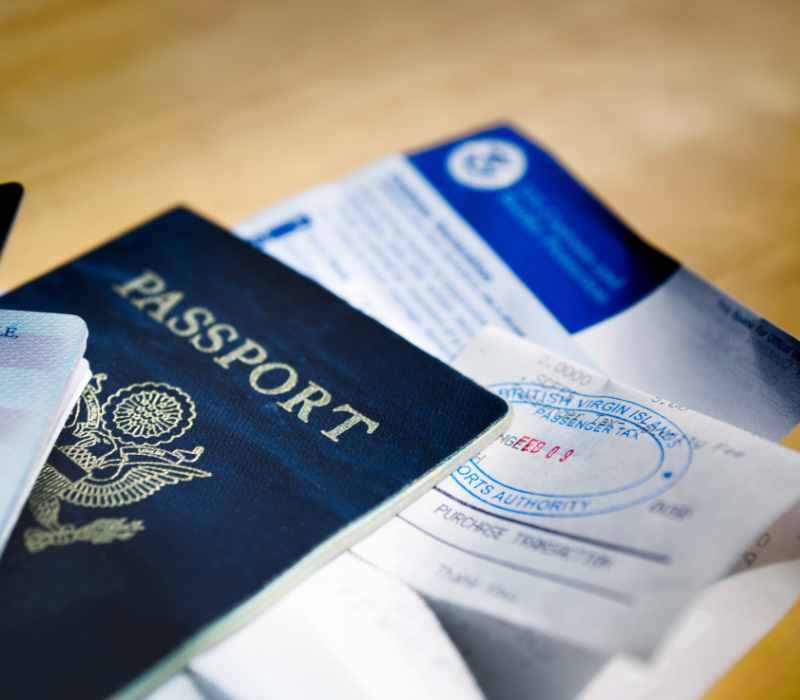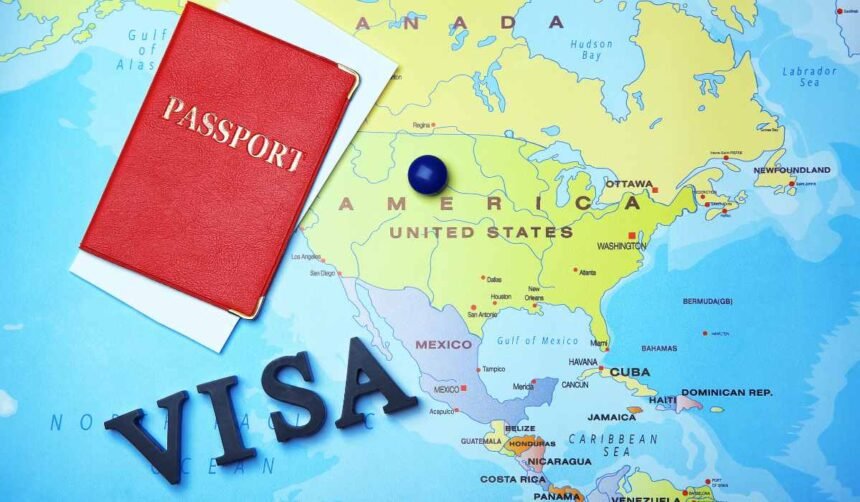Temporary foreign workers may be eligible for an H-1B visa, which is a type of non-immigrant visa. With the possibility of permanent residence and employment in the United States, the H-1B visa is highly desirable among talented individuals.
However, the H-1B visa validity period is an important consideration for both employers and visa holders. This page will explain in detail how long you can stay in the United States on an H-1B visa, how often you can apply for an extension and any other information you might need.
H-1B Visa Basics

Before discussing how long an H-1B visa lasts, it’s important to understand the fundamentals of this type of visa.
The H-1B visa is intended for foreign nationals who possess exceptional talents or knowledge in one of the STEM (science, technology, engineering, and mathematics) disciplines.
In most cases, an H-1B visa applicant must have a job offer from a company in the United States.
Initial H-1B Visa Duration
An H-1B visa can initially be valid for up to three years. When a firm applies for an H-1B visa on behalf of a foreign worker, they must state how long they plan to keep the worker on staff.
Depending on the demands of the business and the details of the position, this could be anywhere from one to three years. Approval of an H-1B visa grants the holder temporary employment eligibility in the United States.
H-1B Visa Extensions
The H-1B visa is special in that its validity can be extended beyond the standard three-year limit. If you want to keep working in the United States after your H-1B visa expires, you’ll need to apply for an extension. For those interested in learning more about H-1B visa extensions, here are the essentials:
- Maximum Duration: Under normal circumstances, an H-1B visa holder can extend their status for a maximum of six years. This means that after the initial three-year period, they can apply for a three-year extension, bringing the total duration to six years.
- Extensions Beyond Six Years: In some cases, H-1B visa holders may be eligible for extensions beyond the six-year limit. To qualify for such extensions, the following conditions must be met:
- PERM Labor Certification: If an H-1B holder has initiated the process of obtaining a green card (permanent residency) through their employer and has an approved PERM Labor Certification, they can extend their H-1B status beyond the six-year limit.
- I-140 Immigrant Petition: Once the I-140 Immigrant Petition is approved, H-1B visa holders can continue extending their H-1B status in one-year increments until a decision is made on their green card application.
3. Recapturing Time Abroad: H-1B visa holders who have spent time outside the United States during their authorized stay can recapture that time to extend their visa status. This can be particularly useful if they need additional time to complete a project or job assignment.
H-1B Visa Transfer and Duration
The ability to change employers is another factor that can shorten or lengthen an H-1B visa’s validity. It is possible to transfer H-1B status to a new employer when an H-1B visa holder changes jobs. The employee’s new company has the option of submitting an H-1B petition on their behalf.
The most important thing to remember about H-1B transfers is that they do not affect the visa’s total validity. No matter how many times an employee switches jobs, the maximum length will never exceed six years.
However, if an employee’s current position no longer meets his or her needs or if a better opportunity arises, he or she may benefit from switching to a new employer.
H-1B Visa and Dual Intent
The H-1B visa is unique in that it permits simultaneous business and pleasure travel. A person can apply for lawful permanent resident (green card) status while in the United States on an H-1B visa.
For H-1B visa holders who hope to make the United States their permanent home, the dual intent provision is a boon.
Beyond Six Years: Path to Green Card

As was previously reported, H-1B visa holders who are also applying for green cards can request an extension of their visa beyond the standard six years. Let’s look into this route to citizenship in greater depth:
Employment-Based Green Card Categories
The vast majority of H-1B visa holders who eventually apply for green cards do so using the employment-based route. Labor certification, filing an immigrant petition (Form I-140), and changing status to permanent residency (Form I-485) are the standard steps in the employment-based green card procedure.
PERM Labor Certification
Getting a PERM Labor Certification is the first step in the employment-based green card process.
The firm must show that no competent U.S. workers are available to fill the position before the H-1B visa can be issued.
Advertising the position and going through the process of finding new candidates might take a lot of time.
I-140 Immigrant Petition
An I-140 Immigrant Petition can be submitted on behalf of an H-1B visa holder once the PERM Labor Certification has been issued.
The foreign worker’s eligibility for a green card under the employment-based category is established through this petition.
Adjustment of Status (Form I-485)
If the beneficiary’s priority date is current after the I-140 petition is authorized, the H-1B holder may submit an application for adjustment of status (Form I-485).
When an I-140 Immigrant Petition or a PERM Labor Certification is approved, that date becomes the priority date.
The ability of H-1B visa holders to submit Form I-485 is contingent upon the availability of visa numbers, as indicated by periodic updates to the visa bulletin.
H-1B Extensions during the Green Card Process
H-1B visa holders can continue to extend their status beyond the original six years in one-year increments while the green card procedure is ongoing.
H-1B visa holders can keep their non-immigrant status while their green card application is being processed thanks to the American Competitiveness in the Twenty-First Century Act (AC21).
H-1B Visa Duration and Spouse/Dependent Visas
Family members of H-1B visa holders frequently travel with them or join them in the United States. H-4 dependent visas can be obtained for spouses and children under the age of 21 who are not married to H-4 visa holders. The H-4 visa’s validity period is directly proportional to the H-1B visa holder’s own validity period.

Dependents of H-1B visa holders may remain in the United States so long as the original H-1B visa holder’s status is valid. When an H-1B visa is renewed for more than six years, H-4 dependents can do the same.
H-1B Visa Duration and Visa Stamping
There are several reasons why H-1B visa holders might need to go abroad, including business and personal excursions. The passport’s visa stamp is a crucial factor in making travel plans. The length of time an individual is permitted entry into the United States is indicated by the visa stamp.
A visa stamp in a passport is typically provided for a shorter amount of time than the H-1B visa itself, even if the visa itself may be valid for several years.
As a result, H-1B visa holders who wish to re-enter the United States after their visa stamp has expired may be required to undergo a visa interview at a U.S. embassy or consulate.
H-1B Visa Duration and the Grace Period
H-1B visa holders are permitted to remain in the United States for a brief amount of time after their visa has expired, known as a “grace period.” The normal grace period was 60 days.
Although they cannot work during the grace period, individuals have the opportunity to finalize their business in the United States, organize travel, or look for new jobs or a change of status.
If you need up-to-date information on the length of the grace period, it’s best to check in with immigration authorities or a lawyer.
The Bottom Line
In summary, the duration of an H-1B visa can vary depending on several factors, including the initial period specified in the visa petition, extensions, and the pursuit of lawful permanent residency (green card).
H-1B visa holders have the opportunity to live and work in the United States for up to six years, with the possibility of extensions beyond that timeframe under certain circumstances.
Understanding the nuances of H-1B visa duration is essential for both employers and visa holders to navigate the complex U.S. immigration system successfully.
As immigration policies and regulations are subject to change, it’s crucial to consult with immigration experts or legal professionals to ensure compliance with current laws and to make informed decisions about your visa status in the United States.



